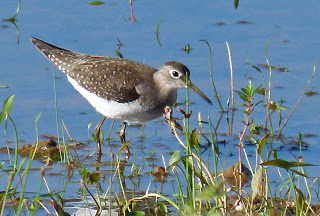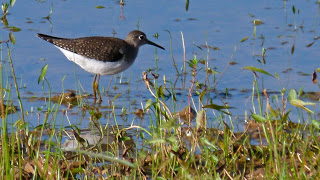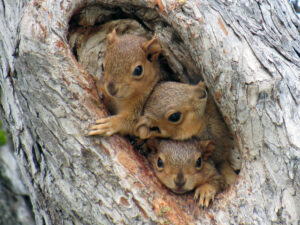 |
| Solitary Sandpiper |
When I hear the word “shorebirds,” I automatically think of birds seen at the beach. After all, that’s the “shore” right? Well, not always. Shorebirds, or waders, are not simply birds found at the shore, but are the families of plovers, sandpipers and related forms that are part of the order Charadriiformes. Most of these birds can be found along shorelines, especially in migration, but they are also found inland, upland, on arctic tundra or at sea. They are related to gulls, terns and auks, also Charadriiformes. One of the many attractions of shorebirds is the long-distance migration of species such as American Golden-Plover between the high arctic and southern South America.
As a birder, I find shorebirds hard to identify, since many of them look very much alike. I sent a photo of this bird to Brainard Palmer-Ball (the birding expert in Kentucky) for some help. His expert eye noticed the following: the main characters for this guy are the size (not tiny, but not large, sort of medium-smallish); the very noticeable eye-ring; and the olive colored legs. The back being mostly plain dark gray with a few smidges of white are also helpful (rather than being mottled and marbled with more browns, rufous, and beige). The bobbing you noticed is also a characteristic behavior (but it’s more of a jerk of the body up in front rather than bobbing of the tail). Brainard finally took pity on me and identified this as a Solitary Sandpiper. Watch the short video below to see the bobbing motion made by this bird.


